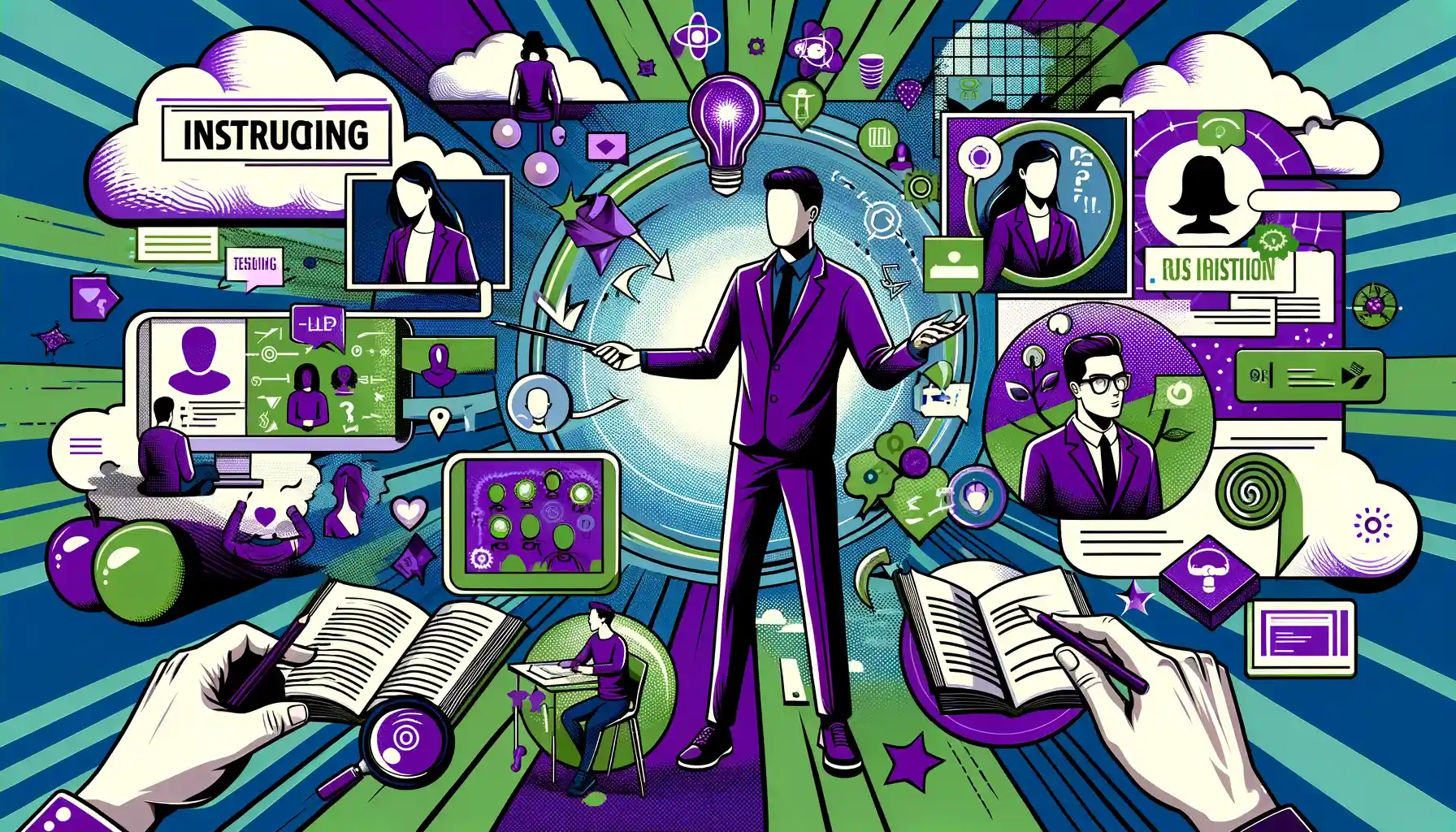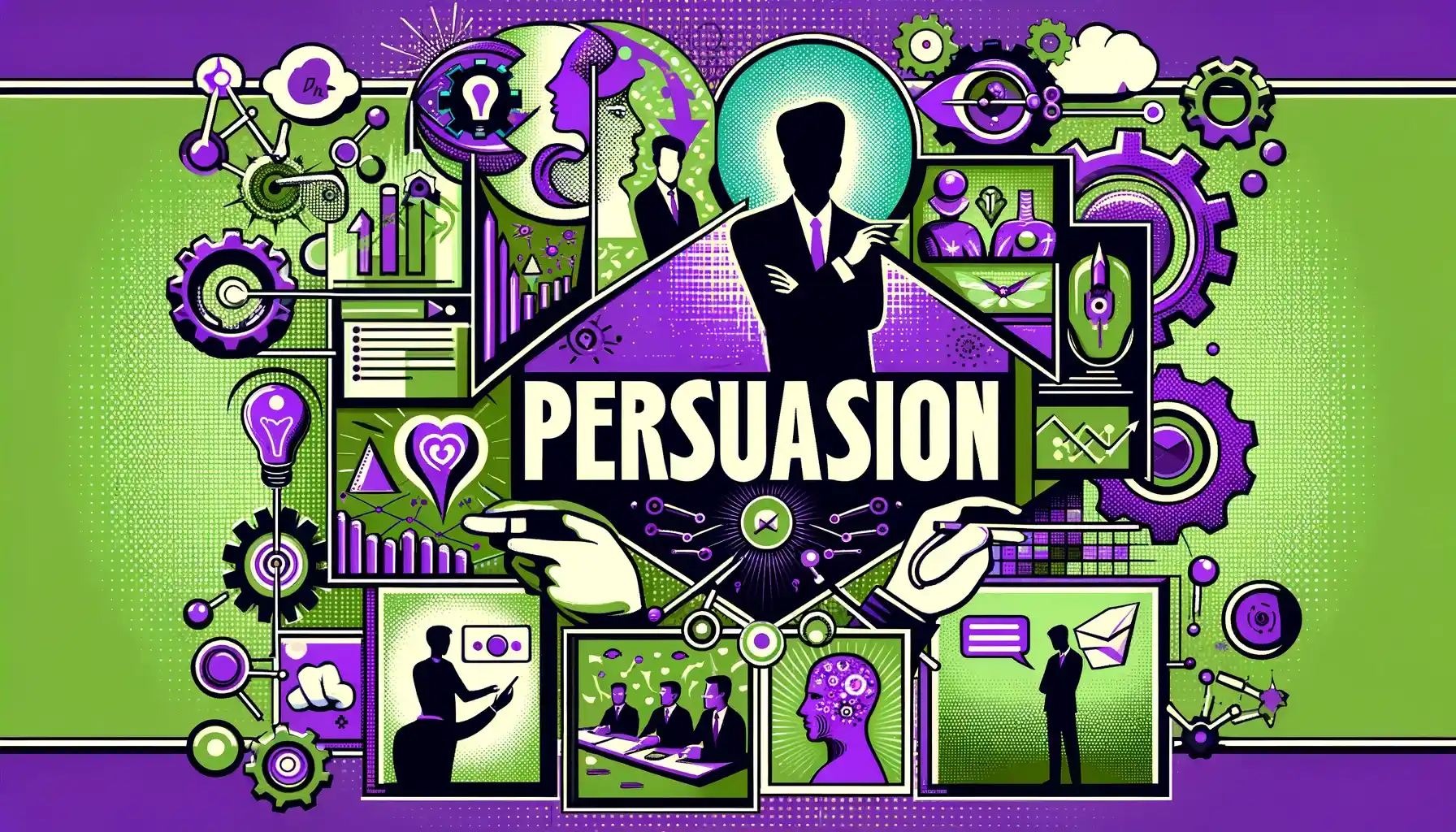Introduction to Active Listening
<p><span style="font-weight: 400;">Have you ever been in a conversation where you suddenly realize you've drifted off into a daydream, missing chunks of what the other person was saying? This lapse is the opposite of "active listening." Now, think about the times you've been so engrossed in a discussion, asking questions, and providing feedback, that the speaker felt truly heard and encouraged. That’s active listening. It’s about being fully present and engaged in the conversation, making the speaker feel valued and understood.</span></p>
<h4><strong>Definition of Active Listening</strong></h4>
<p><span style="font-weight: 400;">Active listening is a communication technique that involves fully concentrating, understanding, responding, and remembering what the other person is saying. It goes beyond just hearing words; it’s about comprehending the speaker’s message and emotions. This requires giving your undivided attention, showing genuine interest, and providing feedback to ensure mutual understanding.</span></p>
<h4><strong>Importance of Active Listening in Personal and Professional Settings</strong></h4>
<p><span style="font-weight: 400;">Communication is inherently imperfect. We can never be entirely certain that our message is conveyed precisely as intended. When someone repeats back what we've said or asks insightful questions, it not only motivates us to communicate more effectively but also reduces misunderstandings.</span></p>
<p><strong>Personal Relationships:</strong><span style="font-weight: 400;"> Active listening fosters understanding, trust, and empathy. It shows the speaker that you value their thoughts and feelings, strengthening the bond between you. For example, in a family setting, a parent who practices active listening can better understand their child’s needs and concerns, creating a more supportive and nurturing environment.</span></p>
<h3><strong>Professional Settings:</strong><span style="font-weight: 400;"> In the workplace, active listening is essential for effective teamwork, problem-solving, and leadership. It helps in building stronger connections with colleagues, resolving conflicts, and creating a collaborative environment. A manager who actively listens to their team can identify potential issues early, foster innovation, and boost morale. For instance, during a brainstorming session, an active listener can synthesize diverse ideas into a cohesive plan, ensuring everyone feels heard and valued. </span></h3>
Benefits of Active Listening
<p><span style="font-weight: 400;">Active listening is the cornerstone of effective communication. It shapes our interactions and ensures that we truly understand each other’s perspectives. By fully engaging in a dialogue, we can bridge gaps, foster mutual respect, and build stronger relationships. Even AI chat tools like GPT and Gemini start their responses by reiterating what they understood from the user's input, demonstrating the importance of comprehension in communication. Here are some key benefits of mastering active listening:</span></p>
<p><strong>Enhances Relationships:</strong><span style="font-weight: 400;"> Active listening builds trust and rapport, making individuals feel valued and understood. This deepens personal connections and fosters a supportive environment. Consider the story of Fred Rogers, the beloved host of "<a class='no-underline text-accent'
href="https://nl.wikipedia.org/wiki/Mister_Rogers%27_Neighborhood" target="_blank">Mister Rogers' Neighborhood</a>." Rogers was known for his exceptional listening skills, which allowed him to connect deeply with both children and adults. His ability to listen actively and empathetically made people feel truly heard and valued, fostering a sense of trust and understanding.</span></p>
<p><strong>Improves Communication Skills:</strong><span style="font-weight: 400;"> By practicing active listening, individuals become better communicators. They learn to articulate their thoughts clearly and respond appropriately to others. As Stephen R. Covey, author of "<a class='no-underline text-accent'
href="https://books.google.com/books?id=upUxaNWSaRIC&printsec=frontcover&dq=The+7+Habits+of+Highly+Effective+People&hl=en&newbks=1&newbks_redir=0&sa=X&ved=2ahUKEwi-95GO-M6HAxXHQ_EDHSoIC5YQ6AF6BAgKEAI">The 7 Habits of Highly Effective People</a>," famously said, "Most people do not listen with the intent to understand; they listen with the intent to reply." Active listening encourages understanding before responding, improving overall communication. Imagine a team leader who practices active listening during meetings. By understanding each team member's perspective before offering solutions, the leader can articulate responses that address everyone's concerns, leading to more effective communication.</span></p>
<p><strong>Increases Productivity:</strong><span style="font-weight: 400;"> In professional settings, active listening can lead to better teamwork and collaboration. When everyone feels heard and understood, it enhances problem-solving and decision-making processes. A real-life example is the approach taken by NASA's Mission Control during the <a class='no-underline text-accent'
href="https://www.sciencedirect.com/science/article/abs/pii/S0363811101000996" target="_blank">Apollo 13 crisis</a>. Faced with life-threatening challenges, the team relied heavily on active listening to understand and address the astronauts' problems. This collaborative environment, where every voice was heard, was crucial in safely bringing the astronauts back to Earth. The productivity and effectiveness of the team were significantly enhanced through their commitment to active listening.</span></p>
<p><span style="font-weight: 400;">Active listening not only builds stronger relationships and improves communication skills but also drives productivity in professional settings. By fully engaging with others and showing genuine interest, you can foster trust, articulate ideas more clearly, and enhance teamwork. As the saying goes, "We have two ears and one mouth so that we can listen twice as much as we speak." Embrace active listening to transform your personal and professional interactions.</span></p>Developing Active Listening
<p><span style="font-weight: 400;">"Sometimes the smallest step in the right direction ends up being the biggest step of your life. Tiptoe if you must, but take the step." This quote encapsulates the essence of developing active listening. Often, the simplest actions—like a timely "aha" or a nod—can make a significant impact in a conversation. Developing active listening skills involves learning when and how to react appropriately based on the context. It also requires enhancing empathy and understanding of the subtleties of communication.</span></p>
<p><strong>Techniques to Cultivate Active Listening:</strong></p>
<p><strong>Pay Full Attention:</strong><span style="font-weight: 400;"> Focus entirely on the speaker, avoiding distractions such as phones or other tasks. Think of a scene in a movie where a character puts down everything they are doing to focus on their partner's words. This full attention signals to the speaker that their message is important and valued. A real-life example is President Bill Clinton, who was known for his ability to make people feel like they were the most important person in the room simply by giving them his full attention.</span></p>
<p><strong>Show That You’re Listening:</strong><span style="font-weight: 400;"> Use verbal and non-verbal cues like nodding, maintaining eye contact, and saying “yes” or “I see.” These small gestures can have a big impact. Imagine a teacher who nods and smiles encouragingly while a student speaks, making the student feel heard and respected. This simple act can boost the student’s confidence and willingness to participate.</span></p>
<p><strong>Provide Feedback:</strong><span style="font-weight: 400;"> Summarize what the speaker has said and ask clarifying questions to ensure understanding. This not only confirms that you are listening but also helps to avoid misunderstandings. For instance, during crisis negotiations, law enforcement officers use a technique called "active listening" where they paraphrase the subject's words to show understanding and build rapport. This technique can be lifesaving and demonstrates the power of active listening in high-stakes situations.</span></p>
<p><strong>Learning to Embrace Empathy:</strong><span style="font-weight: 400;"> Empathy is a core component of active listening. By putting yourself in the speaker's shoes, you can better understand their perspective and respond with compassion. A powerful example is captured in the story of a hospice nurse who listens empathetically to her patients. By truly understanding their fears and concerns, she can provide comfort and support tailored to their emotional needs.</span></p>
<p><strong>Practicing Mindfulness:</strong><span style="font-weight: 400;"> Mindfulness exercises can help improve focus and attention, which are crucial for active listening. Practices such as meditation can enhance your ability to stay present during conversations. Consider the story of Steve Jobs, who practiced Zen meditation. This practice helped him stay focused and present, enabling him to listen more effectively to his team and make insightful decisions. Mindfulness cultivates patience and attention, the essence of active listening.</span></p>
<p><span style="font-weight: 400;">Developing active listening involves a combination of focused attention, empathetic understanding, and mindful presence. By practicing these techniques, you can transform your communication skills, making your interactions more meaningful and impactful.</span></p>Training to Improve Active Listening
<p><span style="font-weight: 400;">One quick tip to improve active listening is to focus on others and resist the urge to believe you know everything better. Imagine if the priests in the church had actively listened to Galileo; perhaps we would have reached the moon sooner! Everyone is the "god" of their world, so be wise and listen to them all. Here are some techniques to improve your active listening:</span></p>
<h4><strong>Podcasts</strong></h4>
<p><span style="font-weight: 400;">Listening to podcasts can be an excellent way to practice focusing your attention and resisting the urge to interrupt, even when you have points to make. Scientific studies suggest that podcasts can enhance listening skills by requiring sustained attention and comprehension. Research indicates that extensive listening practices, like those offered by podcasts,</span><a class='no-underline text-accent'
href="https://journals.plos.org/plosone/article?id=10.1371/journal.pone.0265806"><span style="font-weight: 400;"> improve listeners</span></a><span style="font-weight: 400;">' ability to maintain attention and </span><a class='no-underline text-accent'
href="https://www.leonardoenglish.com/blog/listening-to-podcasts-will-help-you-speak-english-better?ref=brainscape.com">understand spoken content</a><span style="font-weight: 400;">. Furthermore, the cognitive engagement required while listening to podcasts helps develop patience and attentiveness, crucial for active listening.</span></p>
<h4><strong>Role-Playing Exercises</strong></h4>
<p><span style="font-weight: 400;">Engage in role-playing activities that simulate real-life conversations. The game "I am listening" helps in practicing active listening in various scenarios.</span></p>
<p><strong>Game: I am listening</strong></p>
<p><strong>Participants:</strong><span style="font-weight: 400;"> 3-10 players</span><span style="font-weight: 400;"><br /></span><strong>Materials Needed:</strong></p>
<ul>
<li style="font-weight: 400;" aria-level="1"><span style="font-weight: 400;">Pen and paper for each participant</span></li>
<li style="font-weight: 400;" aria-level="1"><span style="font-weight: 400;">Timer</span></li>
<li style="font-weight: 400;" aria-level="1"><span style="font-weight: 400;">List of conversation topics or scenarios</span></li>
<li style="font-weight: 400;" aria-level="1"><span style="font-weight: 400;">Cards with roles and instructions</span></li>
</ul>
<p><strong>Setup:</strong></p>
<ul>
<li style="font-weight: 400;" aria-level="1"><strong>Create Role Cards:</strong><span style="font-weight: 400;"> Prepare cards with different roles and instructions:</span></li>
<ul>
<li style="font-weight: 400;" aria-level="2"><span style="font-weight: 400;">Speaker</span></li>
<li style="font-weight: 400;" aria-level="2"><span style="font-weight: 400;">Active Listener</span></li>
<li style="font-weight: 400;" aria-level="2"><span style="font-weight: 400;">Observer</span></li>
</ul>
<li style="font-weight: 400;" aria-level="1"><strong>Define Scenarios:</strong><span style="font-weight: 400;"> Develop realistic scenarios that require active listening, such as:</span></li>
<ul>
<li style="font-weight: 400;" aria-level="2"><span style="font-weight: 400;">A colleague explaining a complex project</span></li>
<li style="font-weight: 400;" aria-level="2"><span style="font-weight: 400;">A friend discussing a personal problem</span></li>
<li style="font-weight: 400;" aria-level="2"><span style="font-weight: 400;">A customer expressing dissatisfaction with a service</span></li>
</ul>
</ul>
<p><strong>Gameplay Instructions:</strong></p>
<p><strong>Round 1: Introduction and Instructions (5 minutes)</strong></p>
<ul>
<li style="font-weight: 400;" aria-level="1"><span style="font-weight: 400;">Explain the importance of active listening and how it will be practiced during the game.</span></li>
<li style="font-weight: 400;" aria-level="1"><span style="font-weight: 400;">Distribute role cards randomly to participants. Ensure each group of 3 has a Speaker, an Active Listener, and an Observer.</span></li>
</ul>
<p><strong>Round 2: Scenario Setup (5 minutes)</strong></p>
<ul>
<li style="font-weight: 400;" aria-level="1"><span style="font-weight: 400;">Provide each Speaker with a scenario card. Give them a minute to familiarize themselves with the scenario.</span></li>
<li style="font-weight: 400;" aria-level="1"><span style="font-weight: 400;">Active Listeners prepare to engage fully with the Speaker, practicing techniques such as maintaining eye contact, nodding, and summarizing.</span></li>
</ul>
<p><strong>Round 3: Role-Playing (10 minutes)</strong></p>
<ul>
<li style="font-weight: 400;" aria-level="1"><span style="font-weight: 400;">The Speaker shares their scenario with the Active Listener.</span></li>
<li style="font-weight: 400;" aria-level="1"><span style="font-weight: 400;">The Active Listener employs active listening techniques: paying full attention, using verbal and non-verbal cues, and providing feedback.</span></li>
<li style="font-weight: 400;" aria-level="1"><span style="font-weight: 400;">The Observer notes the interaction, focusing on the Active Listener’s engagement and techniques used, and evaluates the Speaker's clarity and engagement.</span></li>
</ul>
<p><strong>Round 4: Feedback and Scoring (10 minutes)</strong></p>
<ul>
<li style="font-weight: 400;" aria-level="1"><span style="font-weight: 400;">The Speaker scores the Active Listener on a scale of 1-10 based on their listening skills, engagement, and feedback provided.</span></li>
<li style="font-weight: 400;" aria-level="1"><span style="font-weight: 400;">The Active Listener scores the Speaker on a scale of 1-10 based on clarity and engagement.</span></li>
<li style="font-weight: 400;" aria-level="1"><span style="font-weight: 400;">The Observer scores both the Speaker and the Active Listener to normalize their rankings of each other.</span></li>
<li style="font-weight: 400;" aria-level="1"><span style="font-weight: 400;">The Speaker and Active Listener score the Observer on their analysis and feedback quality, considering how well the Observer understood and deduced the emotions and dynamics of the dialogue.</span></li>
</ul>
<p><strong>Round 5: Role Rotation and Repeat (20 minutes)</strong></p>
<ul>
<li style="font-weight: 400;" aria-level="1"><span style="font-weight: 400;">Rotate roles so each participant has the chance to be an Active Listener, Speaker, and Observer.</span></li>
</ul>
<p><strong>Round 6: Debrief and Reflection (10 minutes)</strong></p>
<ul>
<li style="font-weight: 400;" aria-level="1"><span style="font-weight: 400;">Gather all participants for a group debrief.</span></li>
<li style="font-weight: 400;" aria-level="1"><span style="font-weight: 400;">Discuss the overall experience, focusing on what was learned about active listening.</span></li>
<li style="font-weight: 400;" aria-level="1"><span style="font-weight: 400;">Encourage participants to share personal insights and how they can apply these skills in real-life situations.</span></li>
</ul>
<p><strong>Example Scenarios:</strong></p>
<ul>
<li style="font-weight: 400;" aria-level="1"><strong>Workplace Scenario:</strong><span style="font-weight: 400;"> A manager explains a new workflow process that involves multiple steps and team coordination.</span></li>
<li style="font-weight: 400;" aria-level="1"><strong>Personal Scenario:</strong><span style="font-weight: 400;"> A friend talks about a recent breakup and their feelings of sadness and confusion.</span></li>
<li style="font-weight: 400;" aria-level="1"><strong>Customer Service Scenario:</strong><span style="font-weight: 400;"> A customer expresses frustration over a faulty product and demands a resolution.</span></li>
</ul>
<p><strong>Tips for Success:</strong></p>
<ul>
<li style="font-weight: 400;" aria-level="1"><span style="font-weight: 400;">Encourage honesty and openness during feedback sessions.</span></li>
<li style="font-weight: 400;" aria-level="1"><span style="font-weight: 400;">Ensure everyone participates in each role to gain a full understanding of the active listening process.</span></li>
<li style="font-weight: 400;" aria-level="1"><span style="font-weight: 400;">Reinforce the importance of empathy and understanding in active listening.</span></li>
</ul>
<p><span style="font-weight: 400;">By engaging in this concise role-playing game, participants can practice and refine their active listening skills in a supportive and structured environment, preparing them for effective communication in both personal and professional settings.</span></p>Active Listening in Different Scenarios
<p><strong>In the Workplace:</strong></p>
<ul>
<li style="font-weight: 400;" aria-level="1"><strong>Meetings:</strong><span style="font-weight: 400;"> During meetings, actively listen to colleagues' ideas and feedback. This encourages a collaborative environment and leads to more effective decision-making.</span></li>
<li style="font-weight: 400;" aria-level="1"><strong>Customer Service:</strong><span style="font-weight: 400;"> In customer service roles, active listening can help in understanding customer concerns and providing better solutions.</span></li>
</ul>
<p><strong>In Personal Relationships:</strong></p>
<ul>
<li style="font-weight: 400;" aria-level="1"><strong>Family and Friends:</strong><span style="font-weight: 400;"> Practice active listening with family and friends to strengthen relationships and resolve conflicts amicably.</span></li>
<li style="font-weight: 400;" aria-level="1"><strong>Parenting:</strong><span style="font-weight: 400;"> Active listening is crucial in parenting. It helps in understanding children's needs and emotions, fostering a supportive environment.</span></li>
</ul>
<p><strong>In Educational Settings:</strong></p>
<ul>
<li style="font-weight: 400;" aria-level="1"><strong>Classrooms:</strong><span style="font-weight: 400;"> Teachers and students can benefit from active listening. Teachers can better understand students' needs, while students can engage more deeply with the material.</span></li>
</ul>Overcoming Barriers to Active Listening
<p><span style="font-weight: 400;">In today's fast-paced world, maintaining focus and avoiding distractions is one of the biggest challenges we face. With countless sources vying for our attention and the constant pressure of economic and personal concerns, it's no wonder that staying present and engaged can be so difficult. However, mastering active listening is crucial for effective communication and building meaningful connections.</span></p>
<p><strong>Addressing Resistance to Listening</strong></p>
<p><span style="font-weight: 400;">Resistance to active listening often stems from preconceptions or biases. For instance, we might fall into the "Horn Effect," where we dismiss everything someone says based on a negative impression. Alternatively, we might succumb to "Confirmation Bias," only hearing what aligns with our preconceived notions. Overcoming these barriers requires a conscious effort to remain open and willing to understand different perspectives. As Carl Rogers, a renowned psychologist, once said, “The curious paradox is that when I accept myself just as I am, then I can change.” Accepting and challenging our biases can lead to more profound and empathetic listening.</span></p>
<p><strong>Managing Distractions</strong></p>
<p><span style="font-weight: 400;">Modern life is riddled with distractions, from the ping of notifications to the lure of daydreams. Creating a conducive listening environment by setting boundaries and minimizing interruptions is essential. Remember, respect is a two-way street. Just as you can tell when someone isn't truly listening to you, others can sense when your attention wanes. Repeating what you've heard not only demonstrates engagement but also helps you stay focused. It's like tuning a radio to the right frequency—once you're locked in, the connection becomes clearer.</span></p>
<p><strong>Building Positive Habits</strong></p>
<p><span style="font-weight: 400;">Developing a habit of active listening takes time and consistent practice. The rewards, however, are significant. People will appreciate and value you more, often without even realizing why. The person who listens attentively and offers thoughtful feedback during conversations is rare and cherished. As Stephen Covey, author of "The 7 Habits of Highly Effective People," aptly put it, “Seek first to understand, then to be understood.” By making active listening a habit, you show others that they are valuable to you, fostering deeper and more meaningful relationships.</span></p>
<p><strong>Practical Tips for Enhancing Active Listening</strong></p>
<ol>
<li style="font-weight: 400;" aria-level="1"><strong>Create a Listening Environment:</strong><span style="font-weight: 400;"> Find a quiet place where you can focus on the conversation without interruptions.</span></li>
<li style="font-weight: 400;" aria-level="1"><strong>Set Clear Intentions:</strong><span style="font-weight: 400;"> Before entering a conversation, remind yourself of the importance of listening and being present.</span></li>
<li style="font-weight: 400;" aria-level="1"><strong>Use Non-Verbal Cues:</strong><span style="font-weight: 400;"> Nodding, maintaining eye contact, and leaning slightly forward shows the speaker you are engaged.</span></li>
<li style="font-weight: 400;" aria-level="1"><strong>Ask Open-Ended Questions:</strong><span style="font-weight: 400;"> This encourages the speaker to elaborate and shows that you are interested in what they have to say.</span></li>
<li style="font-weight: 400;" aria-level="1"><strong>Practice Mindfulness:</strong><span style="font-weight: 400;"> Engage in mindfulness exercises to enhance your ability to stay present and focused.</span></li>
</ol>
<p><span style="font-weight: 400;">By addressing resistance to listening, managing distractions, and building positive habits, you can overcome the barriers to active listening. This skill not only improves your communication but also enriches your personal and professional relationships, helping you to connect deeply and authentically with others.</span></p>Real-Life Examples of Active Listening
<p><span style="font-weight: 400;">Active listening is a powerful tool that can transform interactions, foster understanding, and drive success. Here are some case studies and stories that demonstrate the impact of active listening in various contexts.</span></p>
<h4><strong>Case Studies of Successful Individuals Demonstrating Active Listening</strong></h4>
<p><strong>Barack Obama: Listening Tours</strong><span style="font-weight: 400;"> Former President Barack Obama is known for his exceptional communication skills, which include his ability to listen actively. During his presidency, Obama often conducted "<a class='no-underline text-accent'
href="https://www.theguardian.com/commentisfree/cifamerica/2009/mar/26/obama-nato-afghanistan-europe" target="_blank">listening tours</a>" where he would meet with citizens across the country to hear their concerns and ideas. This approach not only helped him understand the needs of the American people but also built trust and rapport. For instance, during the economic crisis of 2008, Obama's listening tours provided him with firsthand accounts of the struggles faced by ordinary Americans, informing his policy decisions and fostering a sense of empathy and connection.</span></p>
<p><strong>Oprah Winfrey: Mastering the Interview </strong><span style="font-weight: 400;">Oprah Winfrey's success as a talk show host is largely attributed to her active listening skills. On "<a class='no-underline text-accent'
href="https://en.wikipedia.org/wiki/The_Oprah_Winfrey_Show" target="_blank">The Oprah Winfrey Show</a>," she engaged her guests with genuine interest and empathy, often asking probing questions and summarizing their responses to ensure understanding. This technique made her guests feel heard and respected, leading to more open and honest conversations. One notable example is her interview with Lance Armstrong, where her active listening helped uncover deeper truths about his doping scandal, earning her acclaim for her interviewing prowess. Oprah's ability to listen actively not only built trust and rapport with her guests but also made her one of the most influential and beloved media personalities in the world.</span></p>
<h4><strong>Stories of Teams or Individuals Thriving Through Active Listening</strong></h4>
<p><strong>Pixar Animation Studios: Collaborative Creativity</strong><span style="font-weight: 400;"> Pixar Animation Studios is renowned for its collaborative culture, where active listening plays a crucial role. In the book "<a class='no-underline text-accent'
href="https://books.google.nl/books?id=0bbYEAAAQBAJ&printsec=frontcover&dq=Creativity,+Inc.%22+by+Ed+Catmull&hl=en&newbks=1&newbks_redir=0&sa=X&ved=2ahUKEwiwxu7Z-86HAxVsRvEDHQQPAUAQ6AF6BAgLEAI" target="_blank">Creativity, Inc</a>." by Ed Catmull, co-founder of Pixar, he describes how the company fosters an environment of open dialogue and active listening. During their "Braintrust" meetings, team members provide candid feedback on film projects while the creators actively listen without becoming defensive. This practice allows for the free flow of ideas and constructive criticism, leading to innovative and highly successful movies like "Toy Story" and "Inside Out."</span></p>
<p><strong>Google: Enhancing Team Performance</strong><span style="font-weight: 400;"> Google conducted an extensive study called "<a class='no-underline text-accent'
href="https://psychsafety.co.uk/googles-project-aristotle/" target="_blank">Project Aristotle</a>" to determine what makes teams effective. One of the key findings was the importance of psychological safety, where team members feel safe to take risks and express their ideas. Active listening was identified as a critical component of psychological safety. Teams where members listened to each other, asked questions and showed empathy performed better and were more innovative. This insight led Google to emphasize active listening in their training programs, resulting in more cohesive and productive teams.</span></p>
<p><strong>Starbucks: Customer Service Excellence</strong><span style="font-weight: 400;"> Starbucks is a company that prioritizes customer service, and active listening is a core part of their approach. Baristas are trained to listen carefully to customers' orders and preferences, ensuring they feel valued and understood. This attentiveness extends beyond just taking orders; baristas often engage in conversations with regular customers, building relationships and fostering a welcoming atmosphere. <a class='no-underline text-accent'
href="https://www.forbes.com/sites/carminegallo/2013/12/19/what-starbucks-ceo-howard-schultz-taught-me-about-communication-and-success/" target="_blank">Howard Schultz</a>, the former CEO of Starbucks, emphasized the importance of listening to both customers and employees, which helped create a culture of mutual respect and loyalty.</span></p>
<p><strong>Nelson Mandela: Bridging Divides</strong><span style="font-weight: 400;"> Nelson Mandela, the former President of South Africa, was a master of active listening. During his efforts to dismantle apartheid and promote reconciliation, Mandela engaged in numerous dialogues with political adversaries and citizens alike. His ability to listen empathetically and understand different perspectives was instrumental in building trust and finding common ground. Mandela's approach is well-documented in his autobiography, "<a class='no-underline text-accent'
href="https://books.google.com/books?id=jc41AQAAQBAJ&printsec=frontcover&dq=Long+Walk+to+Freedom&hl=en&newbks=1&newbks_redir=0&sa=X&ved=2ahUKEwj5pb2h_M6HAxWVRPEDHRBICTgQ6AF6BAgKEAI" target="_blank">Long Walk to Freedom</a>," where he explains how active listening helped him navigate complex political landscapes and achieve lasting change.</span></p>
<p><span style="font-weight: 400;">These real-life examples illustrate the profound impact of active listening in various domains, from politics and media to business and personal interactions. By listening actively, these individuals and teams were able to foster trust, encourage open communication, and drive meaningful outcomes. Active listening is not just a skill but a powerful tool that can transform relationships and lead to greater success in both personal and professional settings.</span></p>Complementary Skill: Critical Thinking
<h4><span style="font-weight: 400;">In the realm of effective communication, written expression is significantly enhanced by the ability to think critically. <a href="wiseworld.ai/blog/critical-thinking" target="_blank">Critical thinking</a> is not just a cognitive skill; it is a way of approaching problems and making decisions that involve analysis, evaluation, and synthesis of information. This skill is indispensable in today’s complex and fast-paced world, where clear, logical, and persuasive writing can make a substantial difference in personal and professional success.</span></h4>
<h4><strong>Definition and Importance of Critical Thinking</strong></h4>
<h4><span style="font-weight: 400;">Critical thinking involves the objective analysis and evaluation of an issue to form a judgment. It requires questioning assumptions, discerning hidden values, evaluating evidence, and assessing conclusions. This skill is essential in all aspects of life, enabling individuals to navigate complex problems, make informed decisions, and develop well-supported arguments.</span></h4>
<ul>
<li style="font-weight: 400;" aria-level="1">
<h4><strong>Analytical Skills</strong><span style="font-weight: 400;">: The ability to break down complex information into smaller components for easier understanding.</span></h4>
</li>
<li style="font-weight: 400;" aria-level="1">
<h4><strong>Creative Thinking</strong><span style="font-weight: 400;">: The capacity to think outside the box and approach problems from new angles.</span></h4>
</li>
<li style="font-weight: 400;" aria-level="1">
<h4><strong>Problem-Solving</strong><span style="font-weight: 400;">: The skill to identify solutions and make decisions based on logic and evidence.</span></h4>
</li>
<li style="font-weight: 400;" aria-level="1">
<h4><strong>Decision Making</strong><span style="font-weight: 400;">: Making choices after evaluating different perspectives and considering potential outcomes.</span></h4>
</li>
</ul>
<h4><strong>How Critical Thinking Complements Written Expression</strong></h4>
<h4><span style="font-weight: 400;">Critical thinking enhances written expression by ensuring that writing is clear, logical, and persuasive. It helps writers to:</span></h4>
<ul>
<li style="font-weight: 400;" aria-level="1">
<h4><strong>Structure Arguments</strong><span style="font-weight: 400;">: Critical thinking aids in organizing ideas coherently, making arguments more compelling and persuasive.</span></h4>
</li>
<li style="font-weight: 400;" aria-level="1">
<h4><strong>Analyze Sources</strong><span style="font-weight: 400;">: Evaluating the reliability and relevance of sources improves the quality and credibility of written content.</span></h4>
</li>
<li style="font-weight: 400;" aria-level="1">
<h4><strong>Refine Ideas</strong><span style="font-weight: 400;">: Questioning and refining ideas leads to more precise and impactful writing.</span></h4>
</li>
<li style="font-weight: 400;" aria-level="1">
<h4><strong>Avoid Bias</strong><span style="font-weight: 400;">: Critical thinking helps identify and eliminate personal biases, resulting in more balanced and objective writing.</span></h4>
</li>
</ul>
<h4><span style="font-weight: 400;">For instance, in journalism, critical thinking is crucial for verifying facts and presenting balanced viewpoints. In academic writing, it ensures that arguments are well-supported by evidence and logical reasoning. In business communication, it helps in crafting clear and persuasive proposals and reports.</span></h4>
<h4><strong>Strategies to Develop Critical Thinking</strong></h4>
<ul>
<li style="font-weight: 400;" aria-level="1">
<h4><strong>Question Assumptions</strong><span style="font-weight: 400;">: Regularly challenge your assumptions and consider alternative perspectives. This helps in developing a more comprehensive understanding of issues.</span></h4>
</li>
<ul>
<li style="font-weight: 400;" aria-level="2">
<h4><strong>Example</strong><span style="font-weight: 400;">: When writing an argumentative essay, list your assumptions and actively seek out evidence that contradicts them to strengthen your argument.</span></h4>
</li>
</ul>
<li style="font-weight: 400;" aria-level="1">
<h4><strong>Engage in Reflective Thinking</strong><span style="font-weight: 400;">: Take time to reflect on your experiences and decisions. Reflective thinking helps in identifying areas for improvement and learning from past mistakes.</span></h4>
</li>
<ul>
<li style="font-weight: 400;" aria-level="2">
<h4><strong>Example</strong><span style="font-weight: 400;">: Keep a journal where you analyze decisions you made and their outcomes, reflecting on what you could have done differently.</span></h4>
</li>
</ul>
<li style="font-weight: 400;" aria-level="1">
<h4><strong>Practice Analytical Reading</strong><span style="font-weight: 400;">: Read widely and critically, analyzing the structure, arguments, and evidence presented in different texts.</span></h4>
</li>
<ul>
<li style="font-weight: 400;" aria-level="2">
<h4><strong>Example</strong><span style="font-weight: 400;">: While reading articles or books, summarize the main points and evaluate the strength of the arguments and the quality of the evidence.</span></h4>
</li>
</ul>
<li style="font-weight: 400;" aria-level="1">
<h4><strong>Participate in Discussions and Debates</strong><span style="font-weight: 400;">: Engage in discussions and debates to practice presenting your ideas clearly and responding to counterarguments.</span></h4>
</li>
<ul>
<li style="font-weight: 400;" aria-level="2">
<h4><strong>Example</strong><span style="font-weight: 400;">: Join a debate club or participate in online forums where you can discuss current events or controversial topics with others.</span></h4>
</li>
</ul>
<li style="font-weight: 400;" aria-level="1">
<h4><strong>Solve Puzzles and Brain Teasers</strong><span style="font-weight: 400;">: Regularly solving puzzles and brain teasers can enhance your problem-solving skills and stimulate critical thinking.</span></h4>
</li>
<ul>
<li style="font-weight: 400;" aria-level="2">
<h4><strong>Example</strong><span style="font-weight: 400;">: Dedicate time each week to solving Sudoku, crosswords, or other logic puzzles.</span></h4>
</li>
</ul>
<li style="font-weight: 400;" aria-level="1">
<h4><strong>Seek Feedback and Reflect</strong><span style="font-weight: 400;">: After writing, seek feedback from peers or mentors and reflect on their suggestions to improve your critical thinking and writing skills.</span></h4>
</li>
<ul>
<li style="font-weight: 400;" aria-level="2">
<h4><strong>Example</strong><span style="font-weight: 400;">: Share your essays or reports with a colleague and ask for their input on the clarity and logic of your arguments.</span></h4>
</li>
</ul>
</ul>
<h4><span style="font-weight: 400;">By incorporating these strategies into your routine, you can develop stronger critical thinking skills that will enhance your written expression, leading to clearer, more persuasive, and impactful writing.</span></h4>In a Nutshell
Active listening is the cornerstone of effective communication, enhancing both personal and professional interactions by fostering deeper connections, building trust, and boosting collaboration. This essential skill involves being fully present, empathetic, and responsive, leading to improved relationships and increased productivity.
Key Points:
Fully Present: Focus entirely on the speaker without distractions.
Empathetic Engagement: Show genuine interest and understanding.
Responsive Feedback: Provide thoughtful responses and summaries to confirm understanding.
Techniques to Cultivate Active Listening:
Role-Playing Exercises: Simulate real-life conversations to practice active listening.
Mindfulness Practices: Engage in activities that enhance focus and attention.
Listening to Podcasts: Improve attention span and comprehension through sustained listening.
Overcoming Barriers:
Biases: Challenge and set aside preconceptions.
Distractions: Create a conducive environment free from interruptions.
Positive Habits: Consistently practice and reinforce active listening behaviors.
Real-Life Examples:
Barack Obama’s Listening Tours: Demonstrated how active listening can build trust and inform decision-making.
Pixar’s Collaborative Meetings: Showed how active listening fosters creativity and innovation.
By embracing active listening, you can transform your communication skills and foster meaningful connections. Remember, "We have two ears and one mouth so that we can listen twice as much as we speak." Thank you for reading, and may your journey toward mastering active listening be both rewarding and transformative.
What to Do Next
<p><strong>Resources for Further Reading and Development:</strong></p>
<ul>
<li style="font-weight: 400;" aria-level="1"><strong>"The 7 Habits of Highly Effective People" by Stephen R. Covey</strong><span style="font-weight: 400;">: </span><a class='no-underline text-accent'
href="https://books.google.nl/books?id=upUxaNWSaRIC&printsec=frontcover&dq=The+7+Habits+of+Highly+Effective+People%22+by+Stephen+R.+Covey&hl=en&newbks=1&newbks_redir=0&sa=X&redir_esc=y#v=onepage&q=The%207%20Habits%20of%20Highly%20Effective%20People%22%20by%20Stephen%20R.%20Covey&f=false"><span style="font-weight: 400;">This book</span></a><span style="font-weight: 400;"> emphasizes the importance of active listening as part of effective interpersonal habits. Covey’s principle of “Seek First to Understand, Then to Be Understood” aligns closely with the goals of active listening, making it a valuable read for enhancing communication skills.</span></li>
<li style="font-weight: 400;" aria-level="1"><strong>"Crucial Conversations: Tools for Talking When Stakes Are High" by Kerry Patterson, Joseph Grenny, Ron McMillan, and Al Switzler</strong><span style="font-weight: 400;">: </span><a class='no-underline text-accent'
href="https://books.google.nl/books?id=VhkQpRH9D9gC&printsec=frontcover&dq=crucial+Conversations:+Tools+for+Talking+When+Stakes+Are+High%22+by+Kerry+Patterson,+Joseph+Grenny,+Ron+McMillan,+and+Al+Switzler&hl=en&newbks=1&newbks_redir=0&sa=X&redir_esc=y#v=onepage&q=crucial%20Conversations%3A%20Tools%20for%20Talking%20When%20Stakes%20Are%20High%22%20by%20Kerry%20Patterson%2C%20Joseph%20Grenny%2C%20Ron%20McMillan%2C%20and%20Al%20Switzler&f=false"><span style="font-weight: 400;">This book</span></a><span style="font-weight: 400;"> provides strategies for engaging in meaningful dialogues during high-stakes situations. It offers practical tools to improve active listening and ensure that conversations are constructive and solutions-oriented.</span></li>
</ul>
<p><strong>Online Platform:</strong></p>
<ul>
<li style="font-weight: 400;" aria-level="1"><strong>WiseWorld.ai</strong><span style="font-weight: 400;">: WiseWorld.ai is an innovative online platform that uses story-based game simulations to help users practice and develop soft skills, including active listening. Through interactive scenarios that mimic real-life situations, users can engage in conversations, receive feedback, and refine their active listening abilities in a dynamic and engaging environment.</span></li>
</ul>
<p><span style="font-weight: 400;">These resources are selected to help you deepen your understanding and application of active listening in various contexts. By integrating the principles and techniques from these books and platforms into your daily interactions, you can significantly enhance your communication skills, build stronger relationships, and achieve greater success in both personal and professional settings.</span></p>















